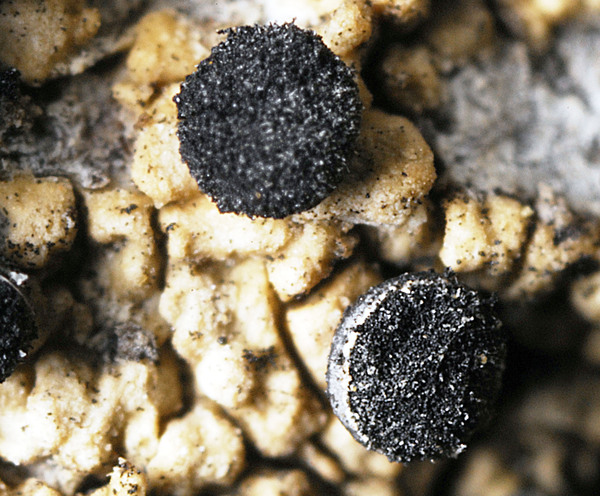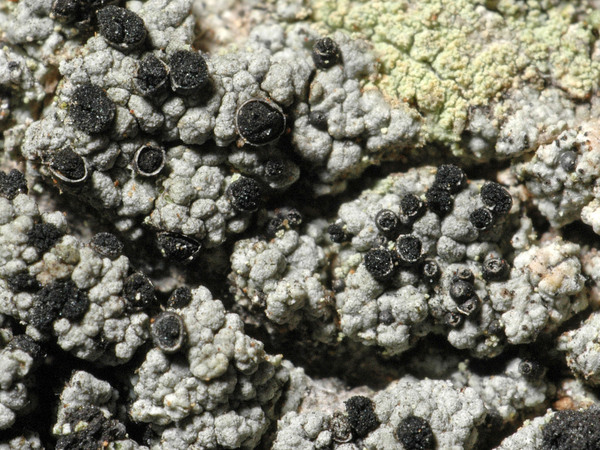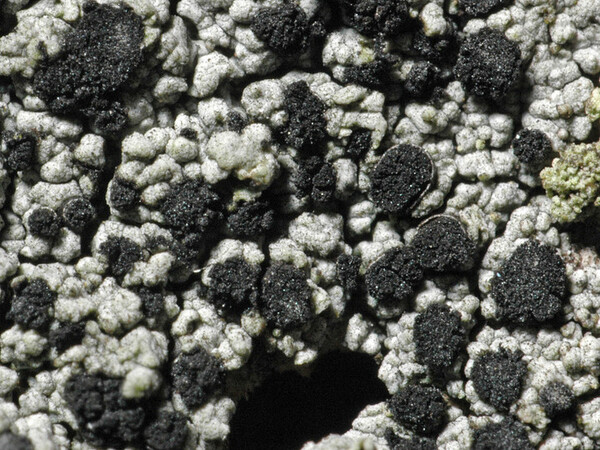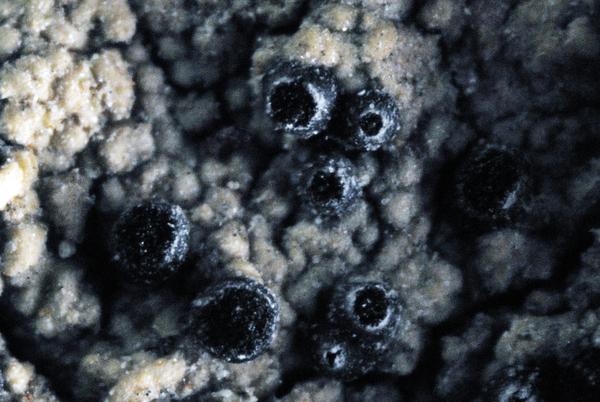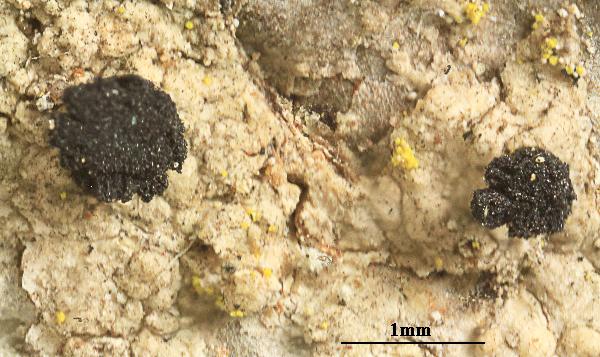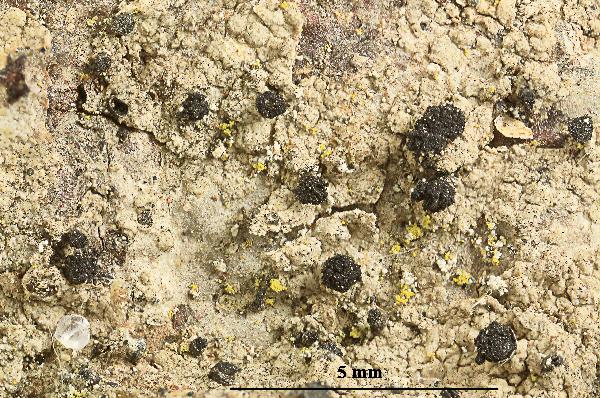Acolium inquinans (Sm.) A. Massal.
Mem. Lichenogr.: 150, 1853. Basionym: Lichen inquinans Sm. in Smith & Sowerby - Engl. Bot., 12: 810, 1801.
Synonyms: Acolium neesii (Flot.) Körb.; Acolium tympanellum (Ach.) Gray; Calicium cembrinum Ach.; Calicium neesii Flot.; Calicium tympanellum Ach.; Cyphelium cembrinum (Ach.) Ach.; Cyphelium inquinans (Sm.) Trevis.; Cyphelium inquinans f. ollare Trevis.; Cyphelium neesii (Flot.) Trevis.; Cyphelium ollare Ach.; Cyphelium pileatum Ach.; Cyphelium subsimile (Nyl.) Trevis.; Cyphelium tympanellum (Ach.) Ach.
Distribution: N - Ven (Puntillo & Puntillo 2009, Watson 2014), TAA (Nascimbene & Caniglia 2002c, Nascimbene & al. 2006e, 2007b, 2008c, 2009, 2010, 2022, Puntillo & Puntillo 2009, Nascimbene 2014, Nascimbene & Marini 2015, Nimis & al. 2015), Lomb (Nascimbene & al. 2006e, Valcuvia & Truzzi 2007b, Puntillo & Puntillo 2009), Piem (Isocrono & al. 2004, Puntillo & Puntillo 2009), Emil (Brunialti & al. 2001, Fariselli & al. 2020). C - Tosc (Puntillo & Puntillo 2009), Sar (Rizzi & al. 2011, Di Nuzzo & al. 2022). S - Bas (Puntillo & Puntillo 2009, Puntillo & al. 2012), Cal (Puntillo 1994, Lich. Graec. 46: Obermayer 1996, Puntillo 1996, Vezda Lich. Rar. Exs. 328, Puntillo & Puntillo 2009).
Description: Thallus crustose, episubstratic, granular, rimose-areolate to verrucose, usually thick and well developed, rarely thin and subimmersed, pale to dark grey. Apothecia abundant, sessile or somewhat immersed, 0.8-1.5(-2.5) mm across, 0.4-0.7 mm high, short cylindrical to lenticular, with a black mazaedium and a faint white pruina on the outer surface of the margin. Exciple brown, 80-170 µm thick laterally, of strongly sclerotized, interwoven hyphae, with an outer, 6-9 µm thick, gelatinous layer, strongly thickened at base (up to 450 µm high); hypothecium dark brown, up to 170 µm high, of periclinally arranged, sclerotized hyphae. Asci cylindrical, formed singly from hooked ascogenous hyphae, persisting until the spores are nearly ripe, with uniseriately arranged spores. Ascospores 1-septate, slightly constricted at septum, brown, broadly ellipsoid, 14-19(-21) x (7.5-)8-11 µm, with an ornamentation of mainly longitudinally arranged, minute ridges in young spores, later disrupted by a few irregular cracks, the surface appearing striated. Pycnidia spherical to slightly flattened, semi-immersed in the thallus, initially with a punctiform ostiole, later with an irregularly split ostiolar area, with branched conidophores. Conidia simple, hyaline, cylindrical, 3-4 x 1 µm, tapering at one end. Photobiont chlorococcoid. Spot tests: thallus K+ yellow to reddish brown, C-, KC-, P-, P+ pale yellow or P+ yellowish red. Chemistry: placodiolic acid, plus sometimes a yellow, unidentified pigment, and other unidentified substances.Note: a temperate to southern boreal-montane, circumpolar lichen found on old conifer stumps, more rarely on lignum of broad-leaved deciduous trees (especially Quercus and Castanea), and on wooden fence-posts, with optimum in upland areas. Widespread throughout Italy, but rare. It is included in the Italian red list of epiphytic lichens as “Vulnerable” (Nascimbene & al. 2013c).
Growth form: Crustose
Substrata: bark and lignum
Photobiont: green algae other than Trentepohlia
Reproductive strategy: mainly sexual
Commonnes-rarity: (info)
Alpine belt: absent
Subalpine belt: extremely rare
Oromediterranean belt: absent
Montane belt: very rare
Submediterranean belt: extremely rare
Padanian area: absent
Humid submediterranean belt: extremely rare
Humid mediterranean belt: absent
Dry mediterranean belt: absent

Predictive model
Herbarium samples


P.L. Nimis; Owner: Department of Life Sciences, University of Trieste
Herbarium: TSB (9928)
2001/11/23
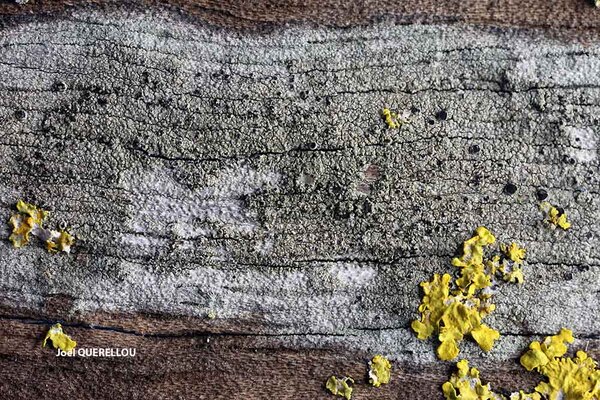
Joël Querellou - Source: http://www.lichensmaritimes.org/index.php?task=fiche&lichen=659&lang=en
France, Lampaul-Plouarzel
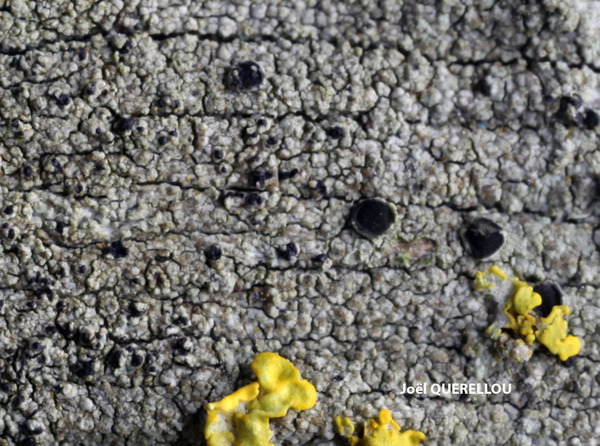
Joël Querellou - Source: http://www.lichensmaritimes.org/index.php?task=fiche&lichen=659&lang=en
France, Lampaul-Plouarzel
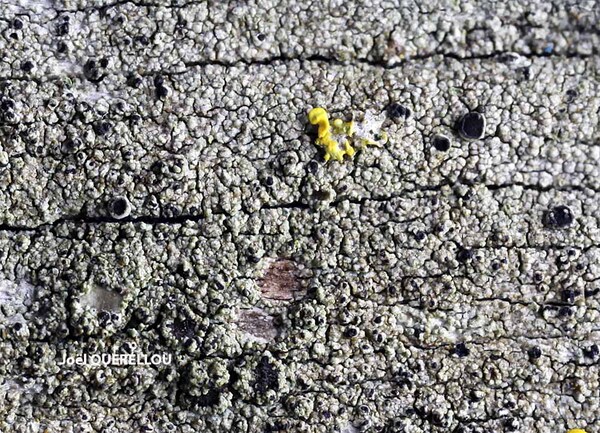
Joël Querellou - Source: http://www.lichensmaritimes.org/index.php?task=fiche&lichen=659&lang=en
France, Lampaul-Plouarzel
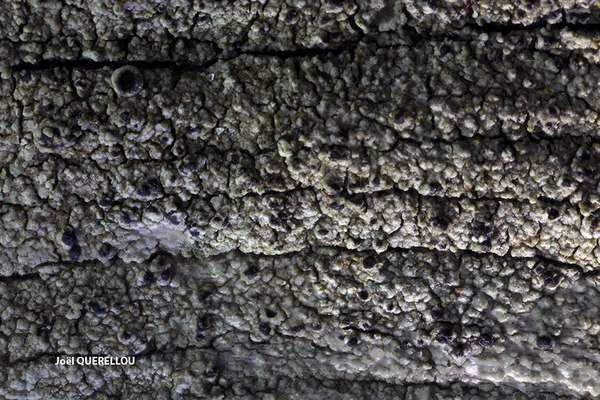
Joël Querellou - Source: http://www.lichensmaritimes.org/index.php?task=fiche&lichen=659&lang=en
France, Lampaul-Plouarzel
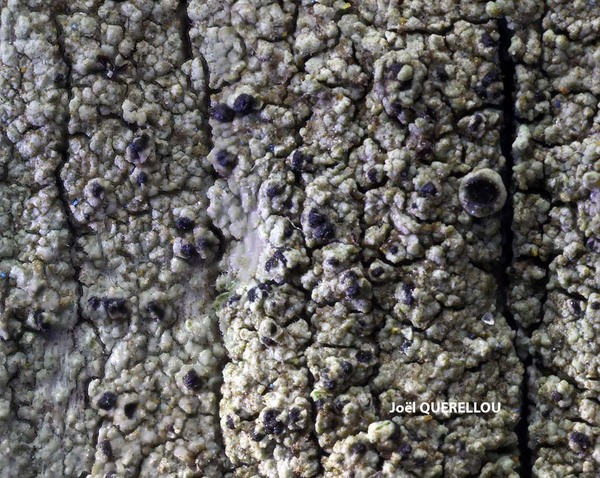
Joël Querellou - Source: http://www.lichensmaritimes.org/index.php?task=fiche&lichen=659&lang=en
France, Lampaul-Plouarzel
Growth form: Crustose
Substrata: bark and lignum
Photobiont: green algae other than Trentepohlia
Reproductive strategy: mainly sexual
Commonnes-rarity: (info)
Alpine belt: absent
Subalpine belt: extremely rare
Oromediterranean belt: absent
Montane belt: very rare
Submediterranean belt: extremely rare
Padanian area: absent
Humid submediterranean belt: extremely rare
Humid mediterranean belt: absent
Dry mediterranean belt: absent

Predictive model
| Herbarium samples |


P.L. Nimis; Owner: Department of Life Sciences, University of Trieste
Herbarium: TSB (9928)
2001/11/23

Joël Querellou - Source: http://www.lichensmaritimes.org/index.php?task=fiche&lichen=659&lang=en
France, Lampaul-Plouarzel

Joël Querellou - Source: http://www.lichensmaritimes.org/index.php?task=fiche&lichen=659&lang=en
France, Lampaul-Plouarzel

Joël Querellou - Source: http://www.lichensmaritimes.org/index.php?task=fiche&lichen=659&lang=en
France, Lampaul-Plouarzel

Joël Querellou - Source: http://www.lichensmaritimes.org/index.php?task=fiche&lichen=659&lang=en
France, Lampaul-Plouarzel

 INDEX FUNGORUM
INDEX FUNGORUM
 GBIF
GBIF
 DOLICHENS
DOLICHENS

